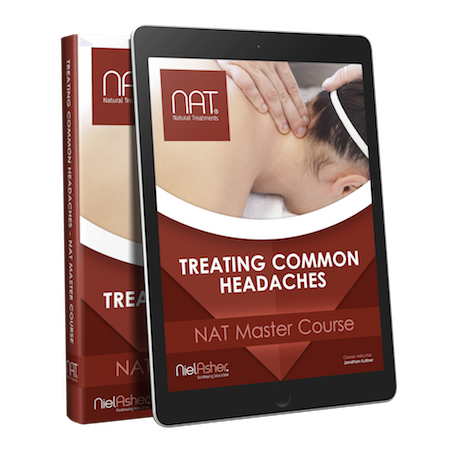Head and Neck Pain - Tension Type Headaches
Trigger Point Anatomy - Occipitalis
Tension headaches are remarkably common - but do you really need to turn to drugs for pain relief?
Tension headaches are the most common type of headache we experience. While they don’t link to any underlying medical condition they can be debilitating and distressing to sufferers.
Too often the given solution is to mask this pain with medication but the root cause is typically muscle tension, itself often resulting from stress - so these are headaches that can usually be addressed successfully with massage and manual therapy techniques.

Trigger Points
Trigger points (tight knots in muscles) can develop over long periods of time as a result of posture, injury, aging - a whole host of reasons, many that we don't know too much about - including "holding patterns", a situation where trigger points form or become active as part of our body's natural "defend and protect" mechanism.
These are used to slow us down or stop us using certain muscles, or use them less, in response to an injury or perceived crisis in the body.
In many cases trigger points will form in the muscles but have no real effect other than occasional mild symptoms of pain, referred pain (pain felt elsewhere in the body or away from the muscle with the trigger point), or stiffness.
In other cases, the trigger points become active and the symptoms from these trigger points become more pronounced and even chronic in nature.
Referred Pain
Tension headaches are associated with trigger points in a number of muscles of the head, neck, back and shoulders. So for example, it's not unusual to find tension headaches that stem from active trigger points in the trapezius muscles.
In many cases however, tension headache symptoms are directly related to active trigger points in the occipitalis and frontalis muscles.
These two muscles of the head are designed to work together with each other (front and back, and each end of the galea) to provide balance and counter balance force to prevent tension.
These muscles are pretty busy in most of us, especially as they work to deal with facial expressions, such as frowning, typically related to stress.
Treatment
Start by talking to your therapist. Most massage and manual therapists will be familiar with treating clients for tension headache - and usually with great success.
Ideally, find a therapist who is experienced in treating trigger points!
Nationally Accredited for CEU/CPD/CPE
This article is intended to be used for information purposes only and is not intended to be used for medical diagnosis or treatment or to substitute for a medical diagnosis and/or treatment rendered or prescribed by a physician or competent healthcare professional. This information is designed as educational material, but should not be taken as a recommendation for treatment of any particular person or patient. Always consult your physician if you think you need treatment or if you feel unwell
NAT Education Membership Plans
Unlimited Access to all Courses
About Niel Asher Education
Niel Asher Education (NAT Global Campus) is a globally recognised provider of high-quality professional learning for hands-on health and movement practitioners. Through an extensive catalogue of expert-led online courses, NAT delivers continuing education for massage therapists, supporting both newly qualified and highly experienced professionals with practical, clinically relevant training designed for real-world practice.
Beyond massage therapy, Niel Asher Education offers comprehensive continuing education for physical therapists, continuing education for athletic trainers, continuing education for chiropractors, and continuing education for rehabilitation professionals working across a wide range of clinical, sports, and wellness environments. Courses span manual therapy, movement, rehabilitation, pain management, integrative therapies, and practitioner self-care, with content presented by respected educators and clinicians from around the world.
Known for its high production values and practitioner-focused approach, Niel Asher Education emphasises clarity, practical application, and professional integrity. Its online learning model allows practitioners to study at their own pace while earning recognised certificates and maintaining ongoing professional development requirements, making continuing education accessible regardless of location or schedule.
Through partnerships with leading educational platforms and organisations worldwide, Niel Asher Education continues to expand access to trusted, high-quality continuing education for massage therapists, continuing education for physical therapists, continuing education for athletic trainers, continuing education for chiropractors, and continuing education for rehabilitation professionals, supporting lifelong learning and professional excellence across the global therapy community.

Continuing Professional Education
Looking for Massage Therapy CEUs, PT and ATC continuing education, chiropractic CE, or advanced manual therapy training? Explore our evidence-based online courses designed for hands-on professionals.




















